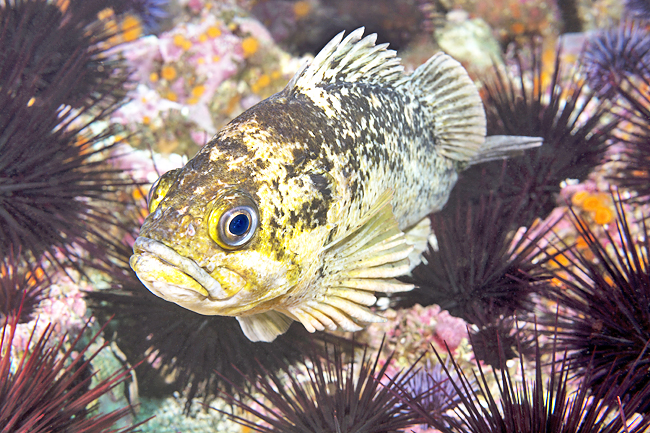Faye Flam
BLOOMBERG – It’s still something of a mystery that a mouse lives only a year or two, a dog maybe 12, and a human about 80.
Researchers disagree about the causes for such stark differences in longevity. Finding the answer might point to new strategies for aging-related diseases – cancer, Alzheimer’s, heart disease and diabetes. Or perhaps medical science would finally coax human beings past what appears to be a hard limit of about 120 years.
Some scientists are looking for answers among weirdly long-lived animals – reptiles and fish that can keep going well beyond 200 years.
There’s even a species of clam that can live to 500. What makes many of these ancient animals interesting is not just their quantity of life but the quality – most don’t show any decline, but instead keep fighting predators, hunting and reproducing decade after decade.
The many species of rockfish in the Pacific Ocean are particularly revealing – and under threat from overfishing. (They’re apparently quite tasty served up as fish ‘n chips.)
Despite being close cousins, each rockfish species carries a different aging clock. Members of one species rarely get past 11, and those of another can remain healthy and fertile well past 200.

By comparing their DNA, scientists are finding differences in genes – genes with human parallels. (Scientists can measure rockfish ages by counting bands that accumulate like annual tree rings in a bone in the inner ear.)
One of the genetic differences between long and short-lived species is in something known as the flavonoid pathway – a pathway referring to an interconnected network of genes that in animals is associated with hormone regulation, explains geneticist Stephen Treaster of Harvard Medical School.
In a paper published in Science, his team showed this and several other pathways associated with longevity in rockfish have counterparts in humans. As a next step, they’re planning to engineer some of the genes associated with rockfish longevity into a short-lived species – the zebra fish, which typically lives at most five years.
Biologist Peter Sudmant of the University of California at Berkeley and colleagues have also been studying rockfish and found different genes and pathways that separate the long-lived species from their short-lived cousins.
In work that was also published in Science, they identified genes associated with the immune system and with the ability to repair DNA “typos” that occur during cell division. Repairing such DNA can help prevent cancer.
Both the Berkeley and Harvard groups also found a connection between longevity and genes connected to what they call the insulin signaling pathway – a series of interconnected genes governing metabolism and fat storage, already known to be associated with ageing.
Sudmant said that more than 100 diverse rockfish species branched out from a common ancestor about eight million years ago, and the original species was long-lived. The shorter-lived ones were probably adapting to hazardous conditions where they had to grow fast and reproduce at a young age for their genes to survive.
But why does growing up fast mean that a species has to die young? Couldn’t fish adapt to predators or other hazards by reproducing earlier without losing their long life spans? The problem, Sudmant said, is that natural selection becomes indifferent to longevity in species that reproduce early in life.
Once conditions become more dangerous, any gene that helps fish grow and reproduce faster will spread – even if it also shortens their life spans.
A genetic change that’s neutral for the young but bad for the old might also spread if living long doesn’t affect how many successful offspring are left behind. And so over time, our genomes get littered with mutations that can kill us after we’re done reproducing.
But long-lived rockfish are never really done reproducing, and some have turned the tables on natural selection by reproducing more prolifically as they age.
They also tend to keep growing indefinitely. In these species, the scientists refer to the oldest ones as BOFFFFs, for big old fat fertile female fish.
Sudmant said some BOFFFFs produce about 1.5 million offspring a year, helping to keep rockfish populations going.
The reason BOFFFFs haven’t taken over the world is that most of the offspring get eaten while they’re tiny. The long-lived species have terrible average life expectancies at birth, since only a lucky few reach adulthood.
Humans have doubled our life expectancy in the past 200 years, mostly because we’ve gotten better at preventing children and young adults from dying. We’ve barely budged the record for oldest person alive.
Maybe longer-lived species will show us the way. But to learn, we first have to conserve them.
This column does not necessarily reflect the opinion of the editorial board or Bloomberg LP and its owners.
FD Flam is a Bloomberg Opinion columnist covering science. She is host of the ‘Follow the Science’ podcast.




